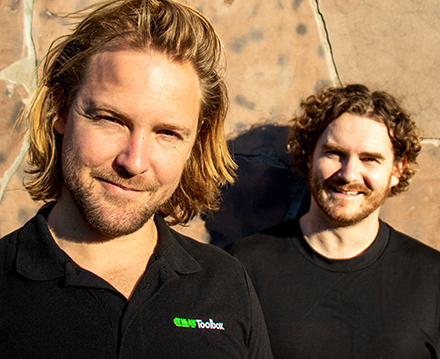Melbourne-based startup CLT Toolbox has raised $1 million in a bridge funding round to expand its mass timber design software, less than 12 months after it raised an initial $1.5 million seed round in October 2023. Source: SmartCompany
SmartCompany has reported that the fresh cash injection includes contributions from climate-focused VC firm Giant Leap as well as Archangel Ventures, Adrian Hondros, Ecotone Ventures and angel investor Harrison Rose.
CLT Toolbox offers a design software platform specifically tailored for mass timber construction. The platform provides structural engineers with tools to design complex timber structures.
The platform also includes robust supply chain functionalities, enabling users to source materials and components efficiently and sustainably.
The funding will be used primarily to support CLT Toolbox’s expansion into the European and US markets and bolster the company’s efforts to make mass timber a mainstream material in construction projects worldwide.
According to CLT Toolbox, there is a significant shortage of timber engineering specialists worldwide – a problem that starts at a university level.
“University curriculums often struggle to keep pace with rapid innovation. Currently, undergraduate degrees are primarily focused on concrete and steel, with only a small portion dedicated to timber design,” Adam Jones, co-founder and CEO of CLT Toolbox told SmartCompany.
“As a result, most universities are not fully equipping the next generation of structural engineers and other professions to design structures using sustainable building materials like mass timber.”
According to Jones, this is why the company was founded: to provide a digital infrastructure for designers and the supply chain to adopt mass timber solutions effectively.
The global construction industry is also under increasing pressure to reduce carbon emissions. CLT Toolbox says its platform makes sustainable building materials more accessible.
“The world is striving towards zero embodied carbon and is looking for alternative options than concrete or steel,” Jones told SmartCompany.
“Concrete alone is more than 8% of the world’s greenhouse gas emissions, more than the cars on our roads. So the status quo is a well-forged path. Change happens when new pathways are created and made easy.”
Jones cites the Clean Energy Finance Corporation (CEFC), which states that some hybrid buildings that have included mass timber have seen a reduction up to 75% in their embodied carbon.
Jones told SmartCompany that CLT Toolbox measures its impact in reducing emissions through the use of low embodied carbon timber and the biogenic carbon sequestration benefits — and the cost savings from eradicating concrete alternatives.
“It’s actually mind-blowing when you crunch the numbers on the impact that choosing mass timber over concrete can have,” Jones said.
“Sometimes, it all boils down to the willingness and proactivity of one individual in a design meeting who decides to be an enabler rather than a blocker.”
Addressing concerns about sustainability in the timber industry, Jones stated that all the suppliers on the CLT Toolbox platform have certified products from forests accredited by either the Forest Stewardship Council (FSC) or the Programme for the Endorsement of Forest Certification (PEFC).
“This certification ensures that the trees are harvested sustainably, with a commitment to replanting, balancing environmental, economic, and social needs,” he said.
Jones also argues that timber products, when managed sustainably, are one of the few renewable source of structural material that can be utilised at scale.
“We can grow our buildings just like we grow our food. The chemical process of timber production sequesters CO2 rather than emitting it, making our buildings akin to natural carbon sequestration facilities,” Jones said.
CLT Toolbox confirmed with SmartCompany that it will be expanding into the European and US markets later this year.
Jones said there aren’t a great deal of challenges with this, outside of unit conversion, due to the startup’s platform being globally translatable.
“Our software architecture is designed to adapt flexibly to different geographies, with the availability of design methods and suppliers depending on the user’s location,” Jones said.
“One of our core values is to solve a problem once and reuse the solution many times. From the outset, our software has been built to leverage design methods from around the world, making them accessible to everyone.”






